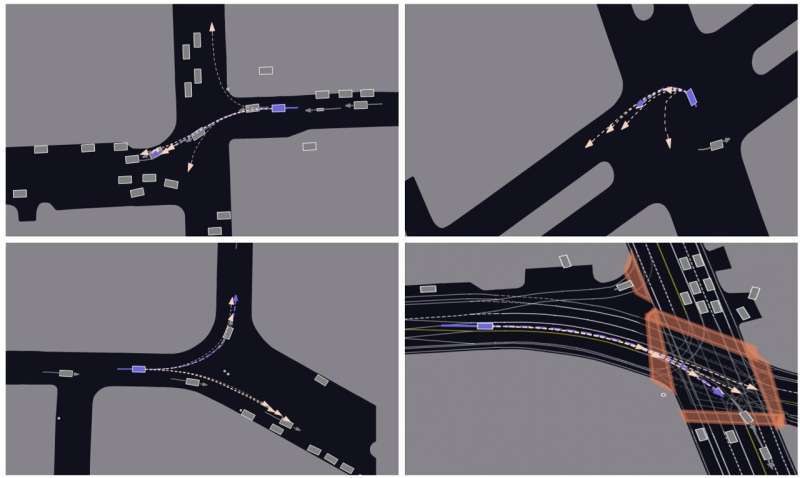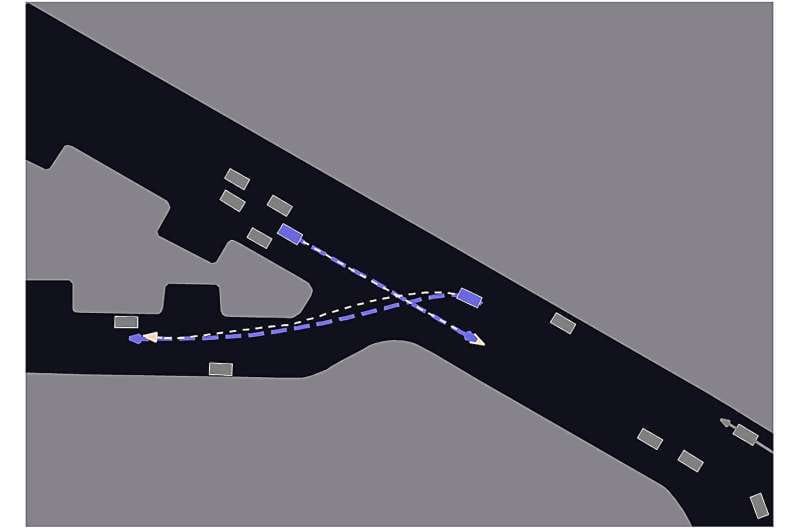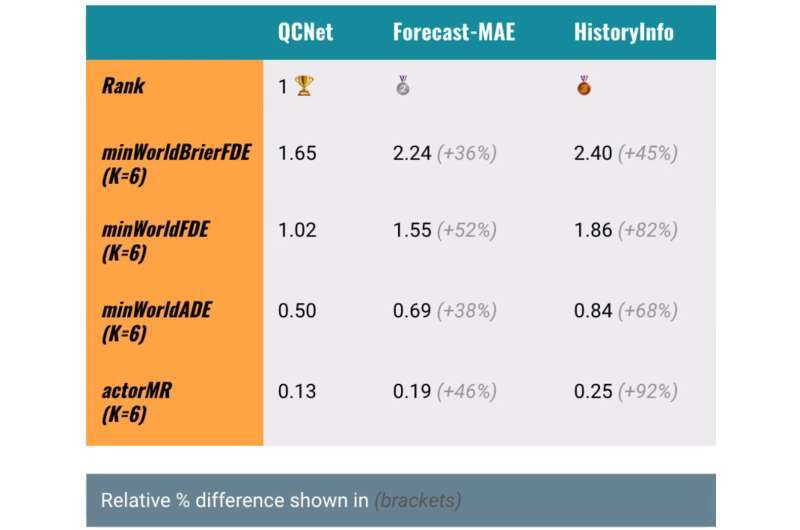- AIPressRoom
- Posts
- Novel AI system enhances the predictive accuracy of autonomous driving
Novel AI system enhances the predictive accuracy of autonomous driving

Precisive real-time prediction of the motion of close by autos or the long run trajectory of pedestrians is important for protected autonomous driving. A analysis staff led by Metropolis College of Hong Kong (CityU) just lately developed a novel AI system that improves predictive accuracy amid dense site visitors and will increase computational effectivity by over 85%, providing nice potential for enhancing the security of autonomous autos.
Professor Wang Jianping, within the Division of Laptop Science (CS) at CityU, who led the examine, defined the essential significance of exact, real-time prediction in autonomous driving, highlighting that even minimal delays and errors can result in catastrophic accidents.
Nonetheless, present options for conduct prediction usually battle to appropriately perceive driving eventualities or lack effectivity of their predictions. These options often contain re-normalizing and re-encoding the newest positional information of surrounding objects and the setting every time the car and its commentary window transfer ahead, though the newest place information considerably overlaps the previous information. This results in redundant computations and latency in real-time on-line predictions.
To beat these limitations, Professor Wang and her staff introduced a breakthrough trajectory prediction mannequin, known as “QCNet,” which may theoretically assist streaming processing. It’s primarily based on the precept of relative space-time for positioning, which supplies the prediction mannequin wonderful properties, such because the “roto-translation invariance within the area dimension” and “translation invariance within the time dimension.”

These two properties allow the place data extracted from a driving state of affairs to be distinctive and stuck, whatever the viewer’s space-time coordinate system when viewing the driving state of affairs. This method permits for caching and reusing beforehand computed encodings of the coordinates, enabling the prediction mannequin to theoretically function in actual time.
The staff additionally included the relative positions of road users, lanes and crosswalks into the AI mannequin to seize their relationships and interactions in driving eventualities. This enhanced understanding of the principles of the street and the interactions amongst a number of street customers allows the mannequin to generate collision-free predictions whereas accounting for uncertainty sooner or later conduct of street customers.
To guage the efficacy of QCNet, the staff utilized “Argoverse 1” and “Argoverse 2,” two large-scale collections of open-source autonomous driving information and high-definition maps from completely different U.S. cities. These datasets are thought-about probably the most difficult benchmarks for conduct prediction, comprising over 320,000 sequences of information and 250,000 eventualities.
In testing, QCNet demonstrated each pace and accuracy in predicting street customers’ future actions, even with a long-term prediction of as much as six seconds. It ranked first amongst 333 prediction approaches on Argoverse 1 and 44 approaches on Argoverse 2. Furthermore, QCNet considerably diminished on-line inference latency from 8ms to 1ms, and elevated the effectivity by over 85% within the densest site visitors scene involving 190 street customers and 169 map polygons, comparable to lanes and crosswalks.

“By integrating this know-how into autonomous driving techniques, the autonomous autos can successfully perceive their environment, predict the long run conduct of different customers extra precisely, and make safer and extra human-like choices, paving the way in which for protected autonomous driving,” mentioned Professor Wang. “We plan to use this know-how to extra functions in autonomous driving, together with site visitors simulations and human-like decision-making.”
The analysis findings have been introduced on the IEEE / CVF Computer Vision and Pattern Recognition Conference (CVPR 2023), an annual tutorial convention in laptop imaginative and prescient, held in Canada this yr, beneath the title “Question-Centric Trajectory Prediction.”
The primary creator is Mr. Zhou Zikang, a Ph.D. pupil in Professor Wang’s analysis group within the CS Division at CityU. The corresponding creator is Professor Wang. Additionally contributing to the analysis have been collaborators from the Hon Hai Analysis Institute, a analysis middle established by Hon Hai Know-how Group (Foxconn), and Carnegie Mellon College, within the U.S. The findings shall be built-in into Hon Hai Know-how Group’s autonomous driving system to boost real-time prediction effectivity and self-driving security.
Extra data: Zikang Zhou et al, Query-Centric Trajectory Prediction (2023).
Supplied by City University of Hong Kong
Quotation: Novel AI system enhances the predictive accuracy of autonomous driving (2023, September 6) retrieved 8 September 2023 from https://techxplore.com/information/2023-09-ai-accuracy-autonomous.html
This doc is topic to copyright. Other than any truthful dealing for the aim of personal examine or analysis, no half could also be reproduced with out the written permission. The content material is supplied for data functions solely.
The post Novel AI system enhances the predictive accuracy of autonomous driving appeared first on AIPressRoom.